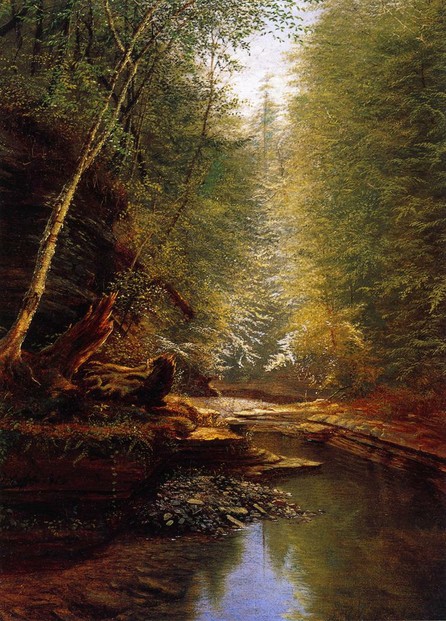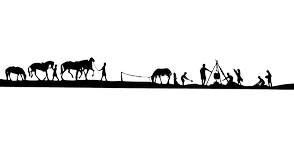Altonen, Brian. “John W. Watkins, Esq. – Land Use and Health in Watkins Glen.” Brian Altonen MPH > History of Medicine. Brian Altonen. Blog. brianaltonenmph.com.
- Available at: http://brianaltonenmph.com/6-history-of-medicine-and-pharmacy/hudson-valley-medical-history/1795-1815-biographies/john-w-watkins-natural-products-land-use-and-health/
“The Bench and Bar.” Chapter LXXVIII: 565-568. In: History of Tioga, Chemung, Tompkins and Schuyler Counties, New York. Philadelphia PA: Everts and Ensign, 1879.
- Available at: http://genealogytrails.com/ny/schuyler/1879history4.html
Crayon, Porte. "An Excursion to Watkins Glen." Harper's New Monthly Magazine, Vol. 43, No. 253 (June 1871): 37 - 49.
- Available via Cornell University Making of America at: http://digital.library.cornell.edu/cgi/t/text/text-idx?c=harp;cc=harp;idno=harp0043-1;view=toc;node=harp0043-1%3A7
Hope, J.D. (James Douglas). Descriptive and Illustrated Guide Book of the Famous Watkins Glen: A New York State Reservation Located at Watkins Schuyler Co., N.Y. (Head of Seneca Lake). First edition. Watkins NY: Hope Souvenir Shop, 1916.
- Available via Internet Archive at: https://archive.org/details/descriptiveillus00hope
- Available via Library of Congress Book/Printed Material at: https://www.loc.gov/item/16013375/
Howard, Alita Trouble. "A Landscape's Look at Watkins Glen." padua.prep.com. St. Anthony of Padua M.S. & Prep School. Web. www.paduaprep.com
- Available at: http://www.paduaprep.com/Images/PDFs/LandscapesLook.pdf.
Ingraham, Tony. A Walk Through Watkins Glen: Water's Sculpture in Stone. Ithaca NY: Owl Gorge Productions, 2009.
"James Hope (1818 - 1892)." Lexi Amberson (Suzay Lamb). American Gallery: Greatest American Painters. November 8, 2012. Blog. americangallery.wordpress.com
- Available at: http://americangallery.wordpress.com/category/hope-james/
manwaringb. “Frowning Cliff, Watkins Glen, New York.” The Rockwell Insider. February 13, 2014. Beth Manwaring. Blog. rockwellmuseum.wordpress.com
- Available at: http://rockwellmuseum.wordpress.com/2014/02/13/frowning-cliff-watkins-glen-new-york/
Michener, A. (Amos) J. "Hope's Art Gallery." Descriptive Guide Book of the Watkins Glen, (Located Near Watkins -- Head of Seneca Lake -- Schuyler County, N.Y). and its Romantic Surroundings. Pages 17, 19. Sixth edition. Philadelphia PA: American Printing House, 1879.
- Available via Internet Archive at: https://archive.org/details/descriptiveguide00ellsm/page/17/mode/1up
- Available via Library of Congress Book/Printed Material at: https://www.loc.gov/item/01015013/
"Millions of Years in the Making: A Century of State Stewardship." New York State Preservationist, Vol. 10, No. 1 (Spring/Summer 2006): 14 - 19.
- Available at: http://www.paduaprep.com/Images/PDFs/GS/2006_SpringPreservWatkins.pdf
Mitchell, Charles R., and Kirk R. House. Around Watkins Glen. Charleston SC, Chicago IL, Portsmouth NH, San Francisco CA: Arcadia Publishing, 2006.
Morrison, Wayne E. Early History, &c. The Village of Havana, N.Y. Ovid NY: W.E. Morrison & Co., n.d.
- Available via Internet Archive at: https://archive.org/details/earlyhistorycvil00morr
Tompkins, Andrew, ed. "Museum Resources: Historical Photos." The Vista, Vol. 6, No. 4 (December 2013): 6 - 7.
- Available at: http://www.schuylerhistory.org/Vol_6_No_4.pdf.
Twain, Mark. Roughing It. Hartford CT: American Publishing Company, 1872.
- Available via Project Gutenberg at: http://www.gutenberg.org/files/3177/3177-h/3177-h.htm
"Watkins Glen State Park." NYFalls > Waterfalls > Waterfalls Listed by County > Schuyler County. 2013. Matthew Conheady. Web. nyfalls.com
- Available at: http://nyfalls.com/waterfalls/watkins-glen/


















 Are Hawaiian Huakai Po Nightmarchers Avenging Halloween Thursday?on 10/02/2024
Are Hawaiian Huakai Po Nightmarchers Avenging Halloween Thursday?on 10/02/2024
 Mailing Addresses for 2023 Form 4868 Extending 1040 and 1040SR April 15, 2024, Due Dateon 04/15/2024
Mailing Addresses for 2023 Form 4868 Extending 1040 and 1040SR April 15, 2024, Due Dateon 04/15/2024
 Mailing Addresses for 2023 Forms 1040 and 1040SR Filed in 2024on 04/15/2024
Mailing Addresses for 2023 Forms 1040 and 1040SR Filed in 2024on 04/15/2024
 Mailing Addresses for 2022 Form 4868 Extending 1040 and 1040SR April 18, 2023, Due Dateon 04/13/2023
Mailing Addresses for 2022 Form 4868 Extending 1040 and 1040SR April 18, 2023, Due Dateon 04/13/2023



Comments
paperfacets, Thank you for appreciating Hope's rendering of Watkins Glen. The actual gorge and the artistic interpretation are more than worth the trip.
If I get a chance to visit New York I will need to see this gorge.